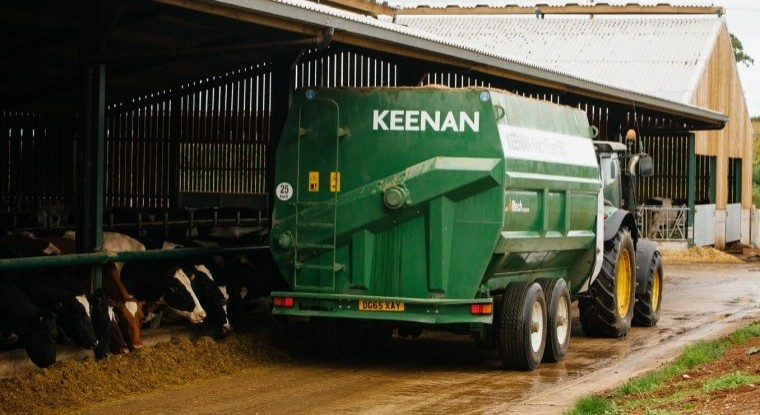With farmers facing costly milk contract penalties for below target butterfat levels, supplementing grass with a total mixed ration (TMR) to prioritise rumen health could pay dividends, according to a leading expert.
Dr Helen Warren, Alltech European technical manager, says typically milk butterfat levels fluctuate the most during spring, but the problem often continues throughout the grazing season as grass quality varies which can cause fluctuations in rumen pH.
“Recent studies indicate that more than 50% of cows experience low rumen pH at grass. This typically causes lower milk butterfat readings, even in the absence of signs of acidosis,” says Dr Warren.
“The issue with grass is that it’s often high in sugars and low in fibre, which makes it rapidly digestible. Spring grass is particularly high risk, although the problem can continue into late summer, particularly when grazing modern ryegrass varieties. Cows are also naturally more inclined to eat the leafy material which contains the highest levels of energy and sugar, and the lowest levels of fibre.”
Dr Warren says that unless grass-based diets are properly balanced, they can have a negative impact on rumen function and fibre digestion, and most notably, milk butterfat production. The resulting low rumen pH can also be a precursor to other problems.
“An acidic rumen environment can damage the lining of the cow’s rumen which subsequently impacts feed intakes and digestion. This can lead to depressed milk production, fertility and other health issues,” adds Dr Warren.
To stabilise the rumen environment and maintain milk butterfat levels along with optimum feed utilisation, she says supplementing grass with a TMR can prove very beneficial.
“Feeding a carefully formulated buffer TMR can help balance grass quality, ensuring sufficient levels of effective fibre in the diet and improving intake consistency. This can help ensure milk quality and quantity is maintained,” says Dr Warren.
However, she adds that it is vital that the buffer ration is correctly balanced. “The digestible fibre content needs to be adequate compared to the sugar and starch content.
“Additional sources of fibre, in the form of forages or straw can also help promote rumen health and milk butterfat levels.”
Dr Warren notes that it is important that any buffer TMR is effectively mixed, with research backing the use of diet feeders that create a mix of optimum structure to support rumen health.
She also advises including a live yeast culture such as YEA-SACC® to improve rumen stability.
“YEA-SACC® is proven to help fibre digestion while simultaneously reducing the build-up of lactic acid in the rumen. It works by metabolising excess oxygen and increasing the amount of lactic acid-utilising and fibre-digesting bacteria, which helps remove excess acid and as a result increases rumen pH.”
Dr Warren says it’s well worth while looking at strategies to maintain milk butterfat levels throughout the grazing season. Not least to ensure milk contract premiums for constituents are achieved, but also to maintain optimum levels of digestion and feed conversion efficiency.
“The financial impact of low milk butterfat is very apparent, but subtle drops in feed efficiency also have a cost. Results from Alltech’s Feed Waste Reduction Initiative on-farm pilot study suggest that just a 0.1 drop in FCE will cost around 1.4ppl based on a 30ppl milk price,” concludes Dr Warren.




